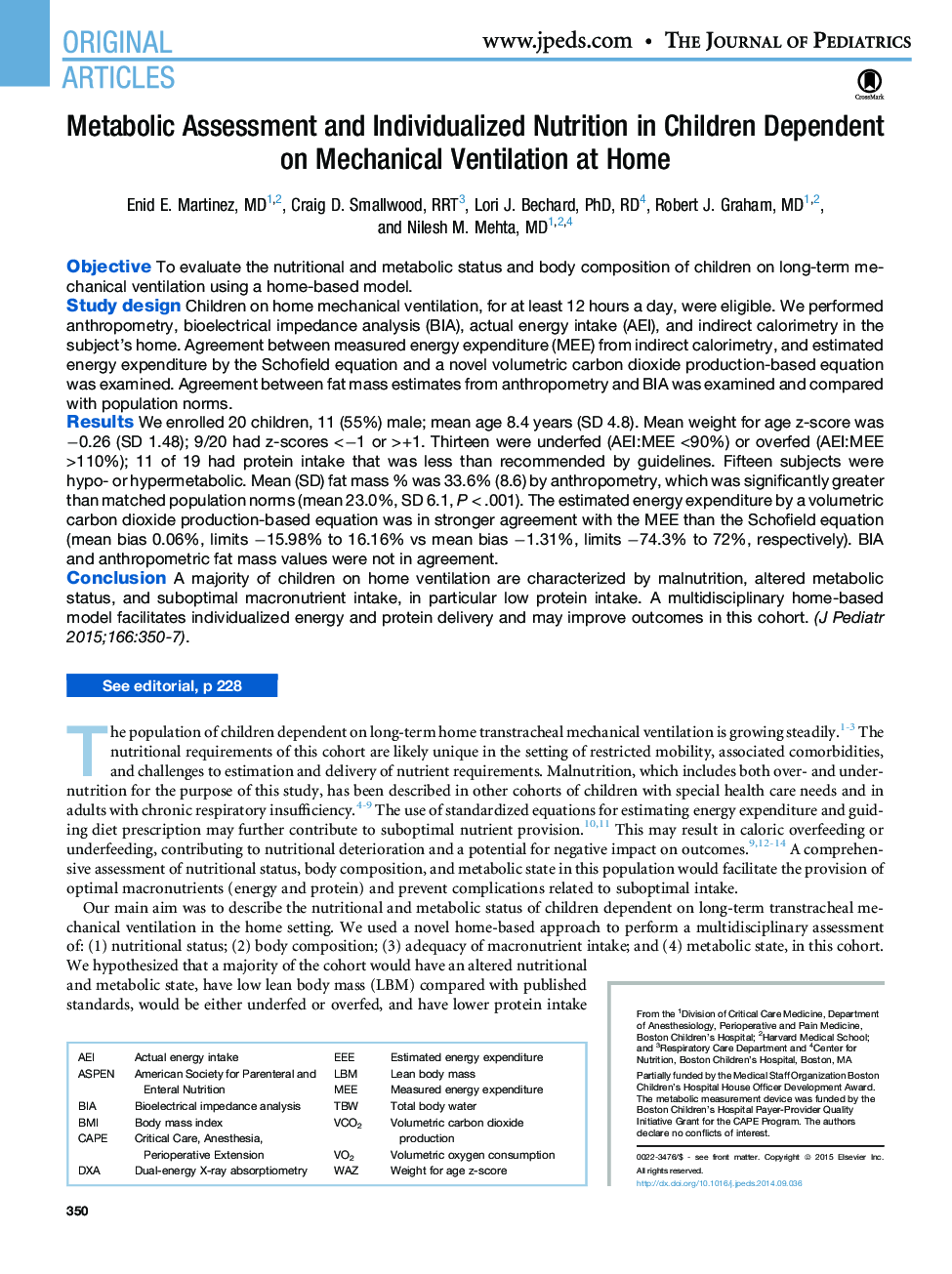| کد مقاله | کد نشریه | سال انتشار | مقاله انگلیسی | نسخه تمام متن |
|---|---|---|---|---|
| 6221714 | 1607446 | 2015 | 8 صفحه PDF | دانلود رایگان |
ObjectiveTo evaluate the nutritional and metabolic status and body composition of children on long-term mechanical ventilation using a home-based model.Study designChildren on home mechanical ventilation, for at least 12 hours a day, were eligible. We performed anthropometry, bioelectrical impedance analysis (BIA), actual energy intake (AEI), and indirect calorimetry in the subject's home. Agreement between measured energy expenditure (MEE) from indirect calorimetry, and estimated energy expenditure by the Schofield equation and a novel volumetric carbon dioxide production-based equation was examined. Agreement between fat mass estimates from anthropometry and BIA was examined and compared with population norms.ResultsWe enrolled 20 children, 11 (55%) male; mean age 8.4 years (SD 4.8). Mean weight for age z-score was â0.26 (SD 1.48); 9/20 had z-scores <â1 or >+1. Thirteen were underfed (AEI:MEE <90%) or overfed (AEI:MEE >110%); 11 of 19 had protein intake that was less than recommended by guidelines. Fifteen subjects were hypo- or hypermetabolic. Mean (SD) fat mass % was 33.6% (8.6) by anthropometry, which was significantly greater than matched population norms (mean 23.0%, SD 6.1, P < .001). The estimated energy expenditure by a volumetric carbon dioxide production-based equation was in stronger agreement with the MEE than the Schofield equation (mean bias 0.06%, limits â15.98% to 16.16% vs mean bias â1.31%, limits â74.3% to 72%, respectively). BIA and anthropometric fat mass values were not in agreement.ConclusionA majority of children on home ventilation are characterized by malnutrition, altered metabolic status, and suboptimal macronutrient intake, in particular low protein intake. A multidisciplinary home-based model facilitates individualized energy and protein delivery and may improve outcomes in this cohort.
Journal: The Journal of Pediatrics - Volume 166, Issue 2, February 2015, Pages 350-357
